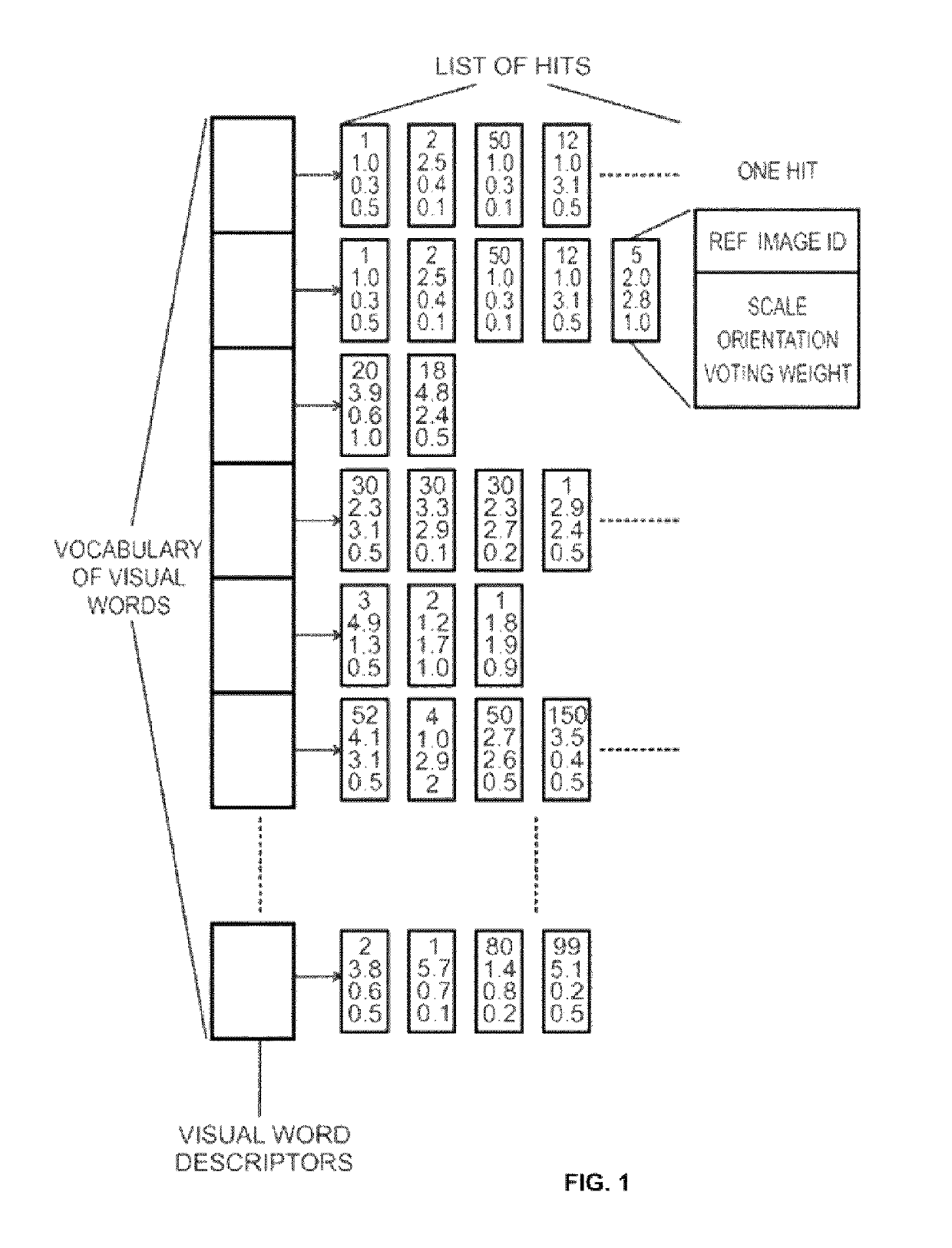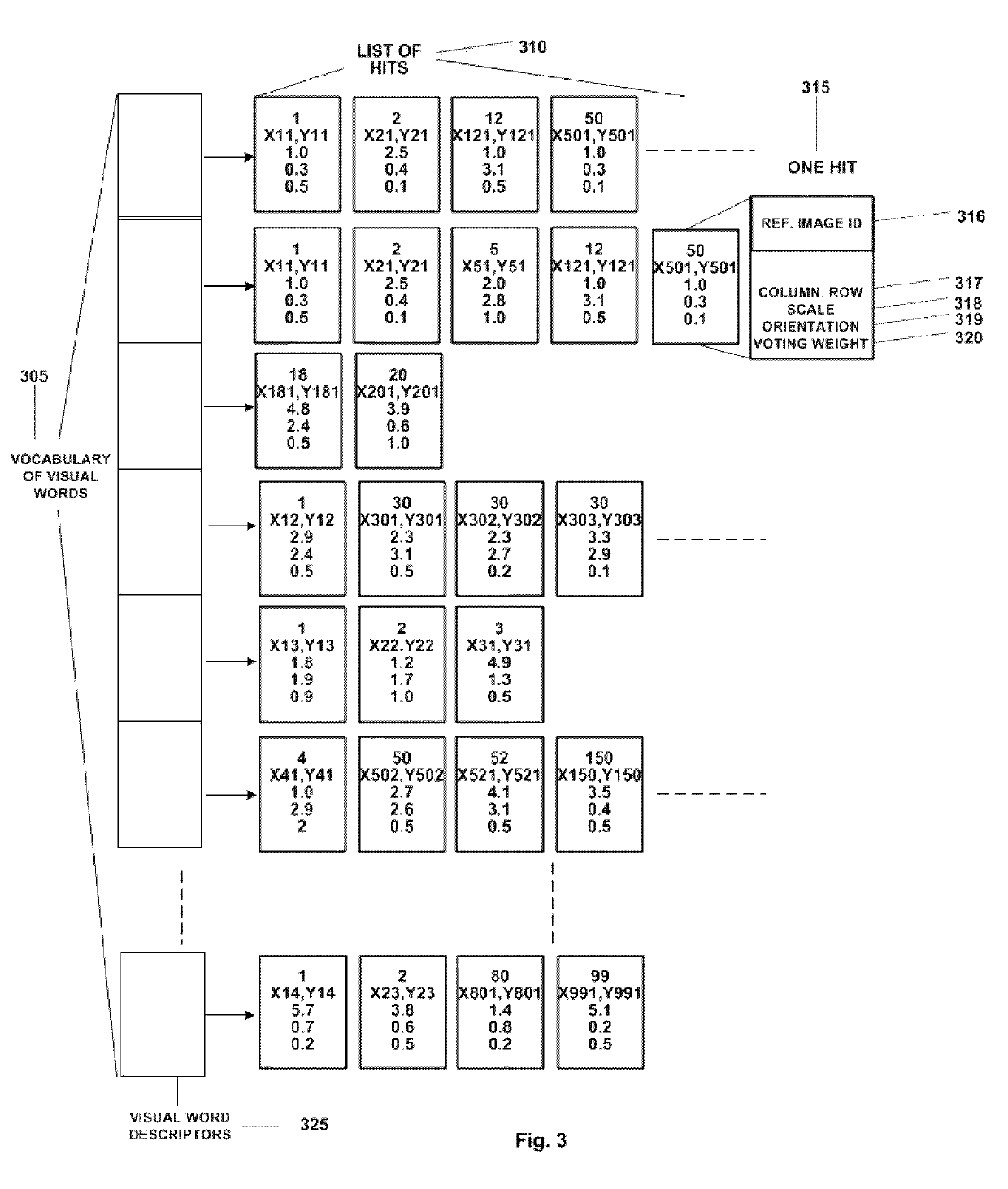Offline, hybrid and hybrid with offline image recognition
a hybrid and image recognition technology, applied in the field of hybrid and hybrid with offline image recognition, can solve the problems of limiting image recognition systems when implemented in mobile platforms, constant flushing of cache, and difficulty in identifying a particular object in a collection of images
- Summary
- Abstract
- Description
- Claims
- Application Information
AI Technical Summary
Benefits of technology
Problems solved by technology
Method used
Image
Examples
Embodiment Construction
[0013]A first objective is a method and system that allows the performance of offline image recognition of objects pictured in images by a mobile device.
[0014]Another objective is a method and system that allows extraction of visual features from an image and their assignment to a pre-computed dictionary of visual words on the mobile device, and transmission of the identifiers of the assigned visual words and their pose (location, orientation and scale) to a server to search for other images of objects in a database that have visual features that can be assigned to those same visual words.
[0015]Yet another objective is a method and system that allows the performance of offline image recognition of objects pictured in images of a reduced database by a mobile device, and then searching on a server in case the recognition did not produce satisfactory results (whether it is because of no matches, low score of matches, or whatever service logic that decides to continue the search in the ...
PUM
 Login to View More
Login to View More Abstract
Description
Claims
Application Information
 Login to View More
Login to View More - R&D
- Intellectual Property
- Life Sciences
- Materials
- Tech Scout
- Unparalleled Data Quality
- Higher Quality Content
- 60% Fewer Hallucinations
Browse by: Latest US Patents, China's latest patents, Technical Efficacy Thesaurus, Application Domain, Technology Topic, Popular Technical Reports.
© 2025 PatSnap. All rights reserved.Legal|Privacy policy|Modern Slavery Act Transparency Statement|Sitemap|About US| Contact US: help@patsnap.com



